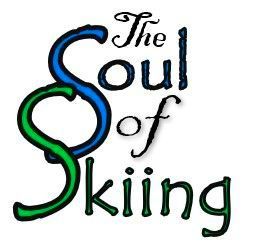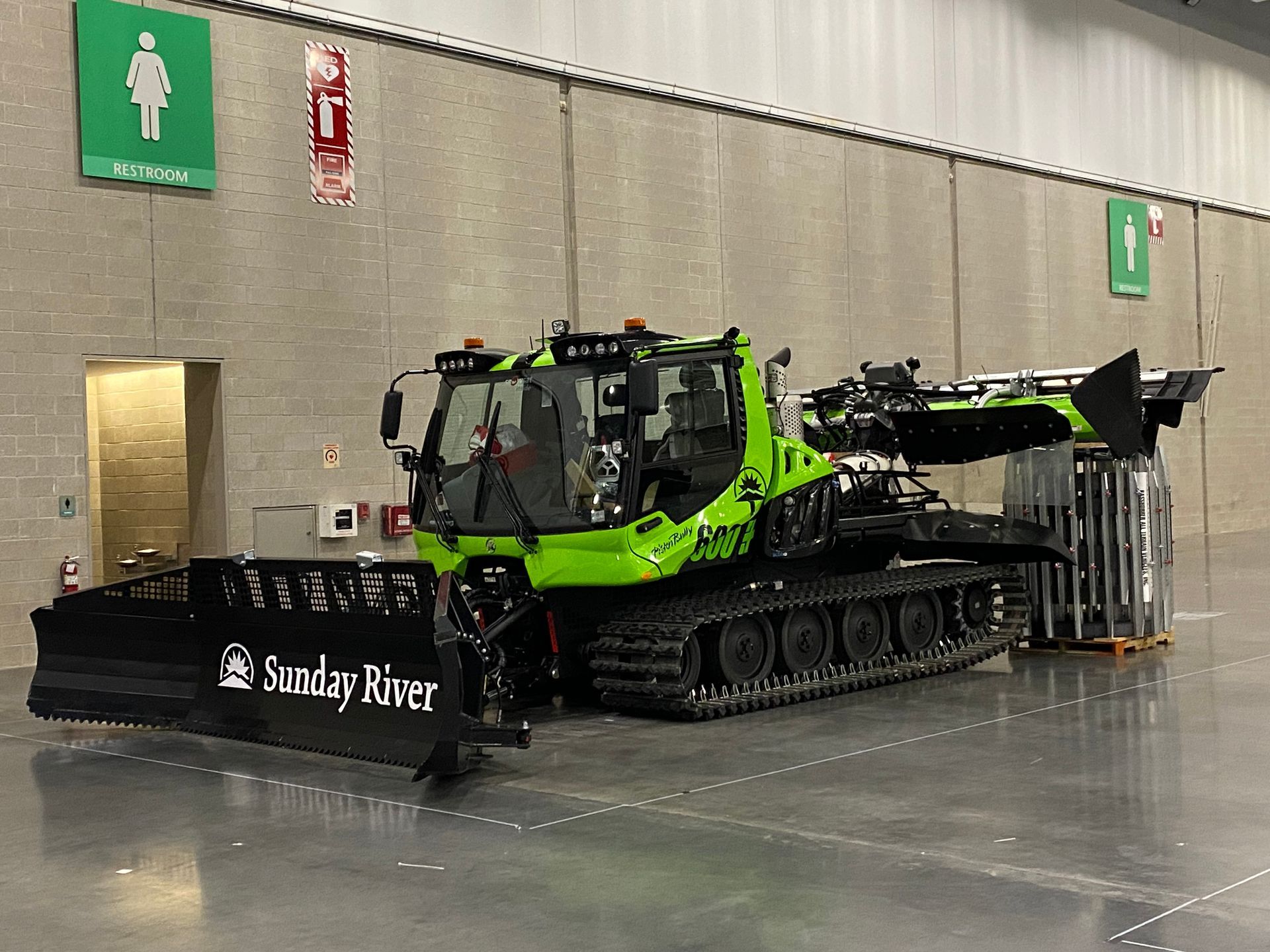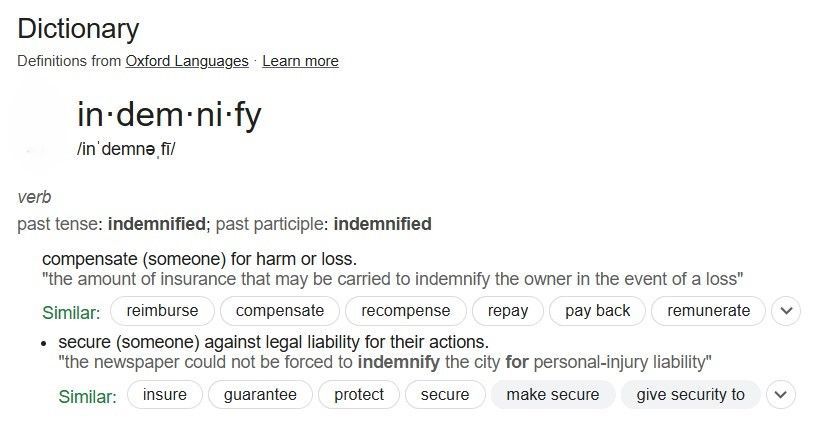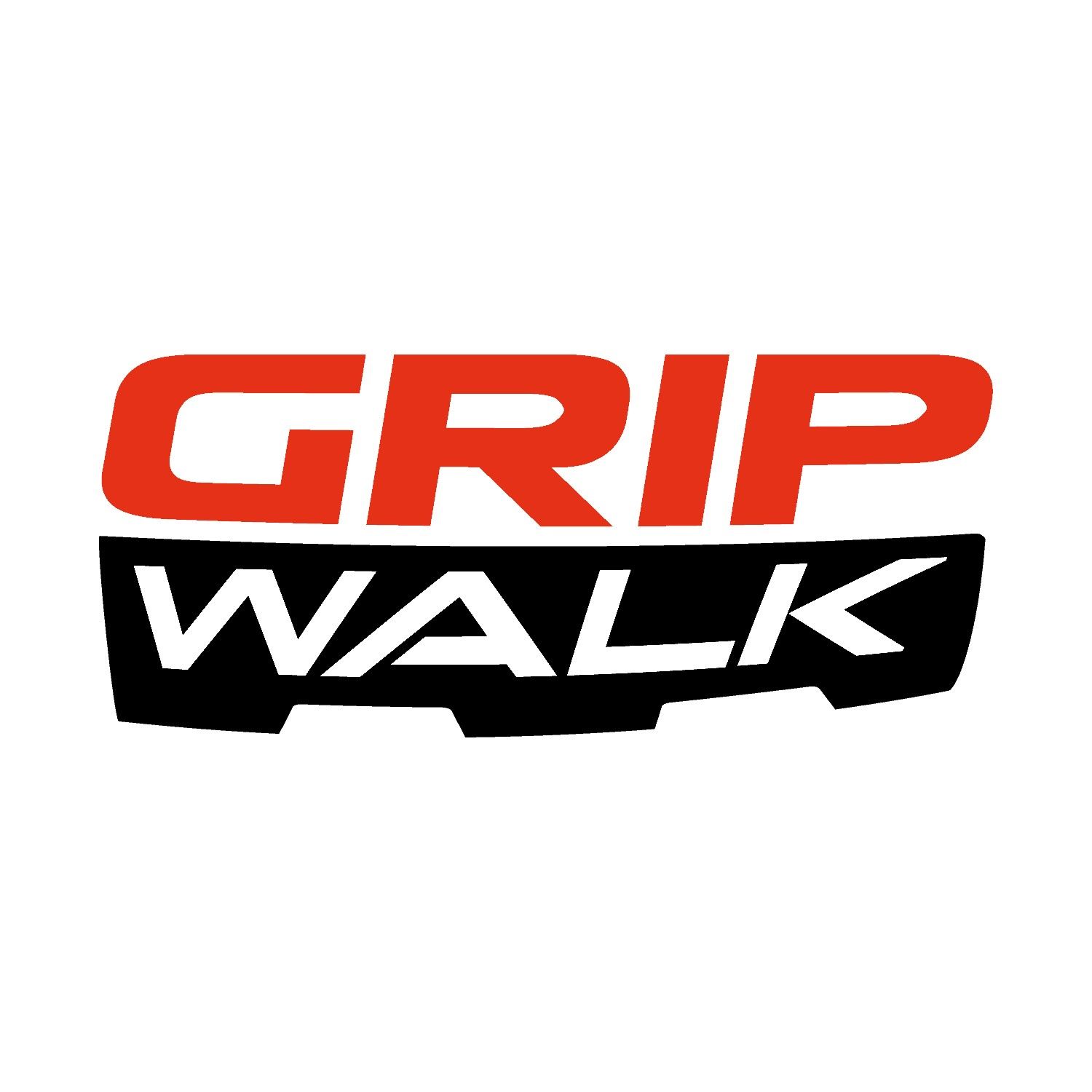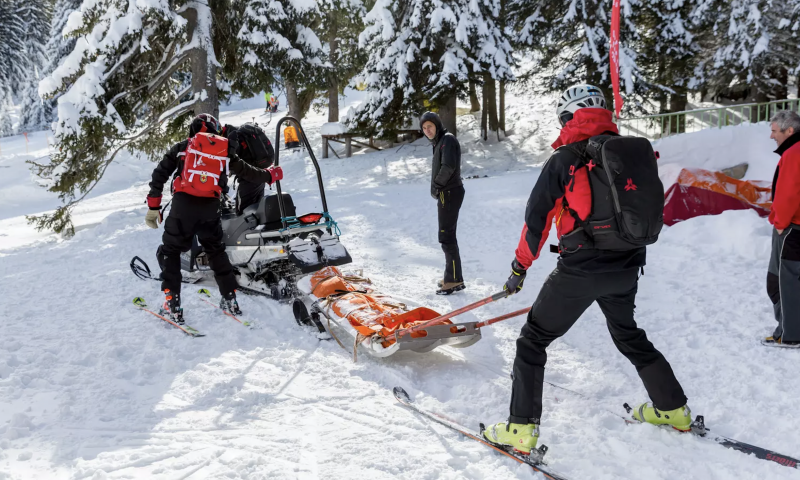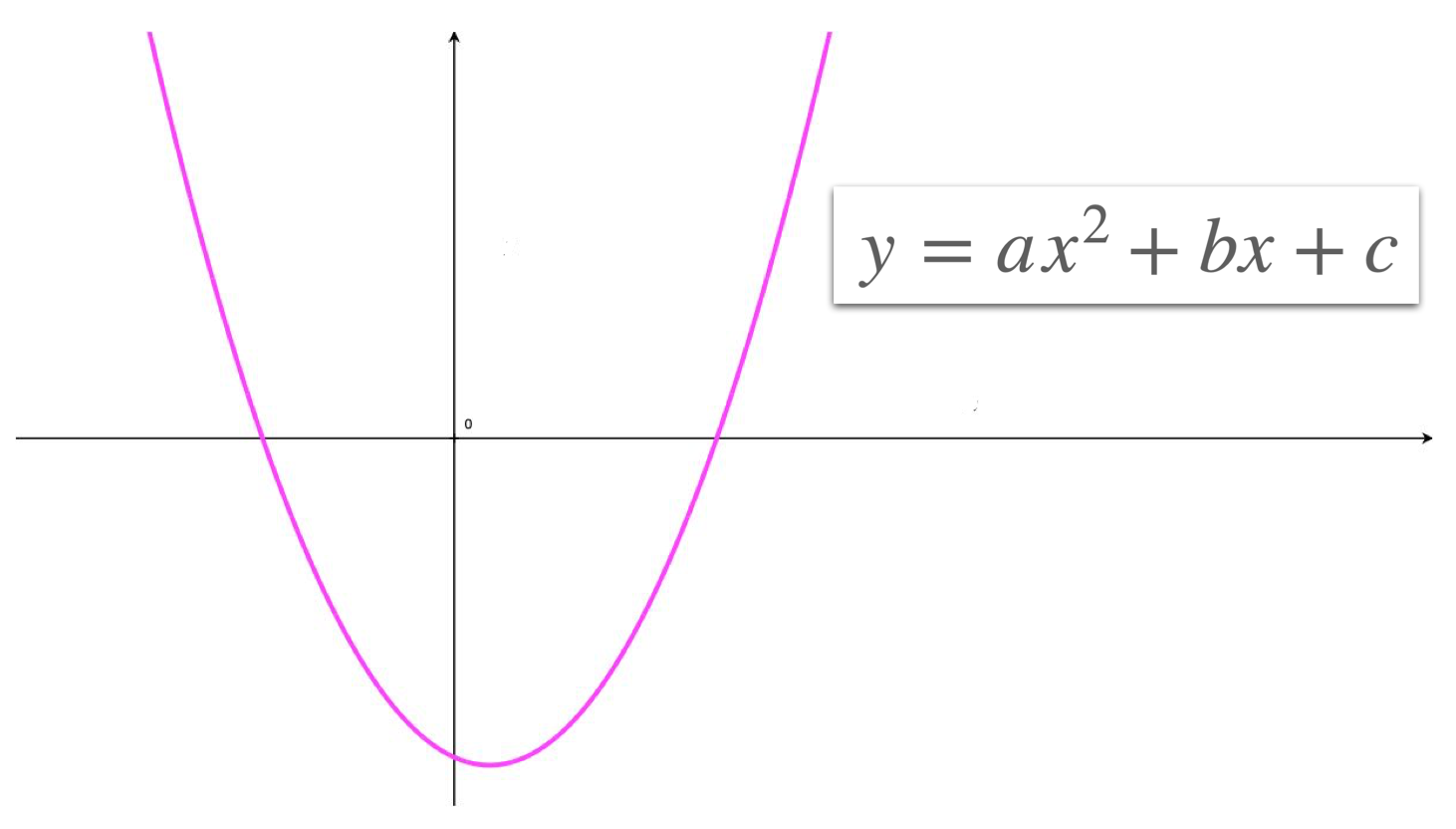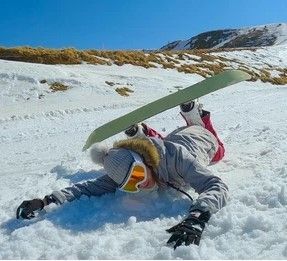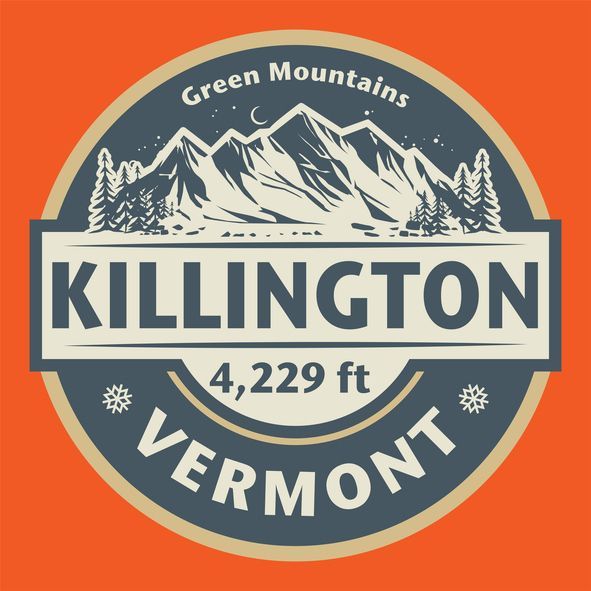How Do I Mount My Own Bindings?
We take this time to step away from our regularly scheduled programming for a moment.
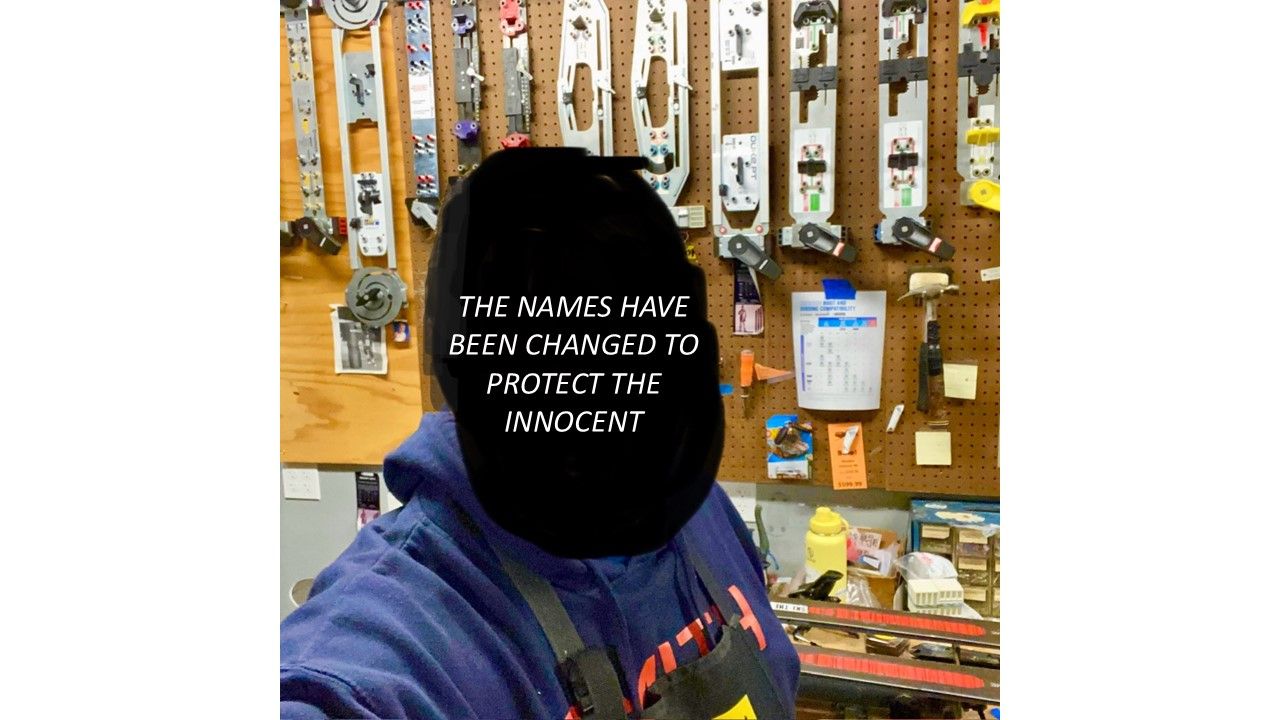
Let's talk about installing your own bindings.
Firstly, I've been trained and certified to install bindings for decades, and I've installed thousands of them, including alpine bindings, cross country bindings, telemark bindings, and touring bindings.
I've installed bindings based upon toe placement, boot center placement, balance point of the ski (how steady handed are you balancing a ski on a screwdriver?), customer requested mounting points, pre-drilled mounting points, system tracks, and just about every location method used in modern times.
I've installed bindings that go back as far as The Salomon 727 and the Look 99.
I've installed bindings from brands that no longer exist (can you say Geze and Ess V.A.R. anyone?) on skis that no longer exist (Pre, Hexcel, Olin) with boots that no longer exist (Caber, Hanson)- all to name a few.
I've used paper templates, manufacturer supplied jigs, and no jig at all.
In all the years, and all the bindings, the most important thing I've learned is DON'T install your own bindings.
Let me step away from that comment for a second...
It is entirely my intent to keep the content herein positive, and to avoid using words like "don't", "no", "stop"... even words like "safe".
Case in point- We all know there's risk in skiing, and taking risks is fun. I've taken plenty of them myself... Having been pulled behind a pickup on RTE 100 in central VT, wearing skis (and no helmet) at more than 80 MPH on a snowy night, I can tell you risk is definitely fun (and the sparks rooster tailing up behind your skis, in the dark, are amazing- even hypnotic).
DISCLAIMER- doing stupid things isn't smart- and that was a stupid thing- please don't do that.
...Look, you've made me do it again!
In that vein, someone once said to me, "I never tell people to ski safe- skiing requires a level of aggression, so skiing safe can be more risky than skiing aggressively". With that, I say, "Ski smart".
So, in this case too- be smart.
I realize that the bohemians (and libertines) amongst us are rolling their eyes at this, thinking things like "Ski shops have us over a barrel- I'm not paying $80 to have someone else do something I can do myself with a few common tools and a YouTube video".
Well, you're right.
They kinda do have you over a barrel. My advice; get over it. Pay the money.
Here are a few reasons-
If you, being a non-certified technician, (try to) install your own bindings, you increase the risk of:
- Voiding the warranty.
- Relieving the manufacturers of the ski and the binding of their responsibility to indemnify you and their products.
- Increasing your actual level of risk (to your gear AND yourself) exponentially.
"Blah-blah, that's just broiler plate- that's what shops tell people so they can make more money".
My response; Shops provide services. They need to get paid to provide those services, or they can't continue to provide those services. They pay to maintain their employee
certifications as well as their shop(s), and to train and certify their technicians, buy the tools, use the power to run them....
In the end, if they charge too much (a non-competitive rate), customers will go elsewhere.
That's obvious- business 101.
Ironically, if you read the comments and/or taglines associated with these videos, you will see something to the effect of: "DISCLAIMER: Improper mounting of ski bindings can lead to injury or death. Please consider leaving this one to the pros." That's quoted directly from one of the "How to..." videos.
So, let' talk about what's less obvious-
Starting with "I saw how to do it in a YouTube video"-
The video was really cool- it really appears to have great advice.
How do you know? Do you have the expertise to
REALLY know it has the correct and comprehensive information?
No matter how well done the video is, how specific the instructions are, or how correct it is, any mistake in following their instructions (again, even if they are comprehensive and correct), on the order of as little as 1mm, can be catastrophic.
Just getting the basics right is incredibly hard- no matter how good you are with a tape measure, getting the skis mapped out correctly for center/center (centerline horizontally and center line laterally) is a daunting task. You could follow the same instructions, on the same skis, a dozen times, and never end up marking the skis in the correct (or intended) places.
Then, aligning your boot to those measurements is also quite difficult. Once aligned, keeping it aligned while you mark it out is arduous.
After that, aligning the bindings, then marking out where to drill, is exponentially harder.
The odds of getting both skis marked out the same, for the center/center, the boots, AND the bindings, not to mention drilling it correctly, are pretty slim- even if you've done it before.
Doing the actual drilling can be extremely difficult- even using a jig with very precise drill guides, and using a drill bit that has the depth preset, doesn't guarantee you wont misalign the drill holes, ovalize the holes, or drill through the ski entirely... never mind the unforeseen issues you may encounter from metal mounting plates and overheated drill bits while trying to drill through them.
Any mistake along the way magnifies issues on subsequent steps.
It's like the accounting exam you had as a business requirement in school- if you have a multi-part problem and make a mistake deciding which numbers to use, make a mistake in the actual math, or transpose figures in step one, all the subsequent answers are incorrect, even if all the formulas you use are correct. Only, there's no partial credit for installing your bindings wrong.
On top of that, some manufacturers supply paper jigs that you can attach to the topsheet of the ski to make the process easier.
Well, that's not easier.
You still have to figure out the position of the jig on the skis, using the same steps as you would without a jig. THEN you have to make sure the jig is attached properly and doesn't move during the process (and it will- I guarantee it). The only difference is that you're not physically placing the binding on the ski to mark out where to drill. All a paper jig tells you is where to drill (hopefully you've lined up the bindings to the jig to make sure THAT is correct, before you start the process, but I digress).
All this requires incredible skill and patience.
No matter how many gummies you've swallowed to improve your patience and calm, the odds of getting it right are very, very slim.
Let's talk about some of the things that can happen when you make a mistake-
Alignment-
The single most important part of installing bindings is making sure the boots are in the right place. If they aren't that very expensive ski you have suddenly does not do what you thought it would do.
In the case of misaligned boots/bindings, the result could be something as simple as it sucks to ski on that ski, or as extreme as you've caused tendonitis, or worse, an injury, because the binding didn't line up correctly on the ski.
If the drill holes aren't in precisely the right place, and you screw on the binding anyway, you create a situation where there's uneven pressure on the screws to where the binding rips out, or it cracks/fails (or both), or doesn't release/hold you in properly. The uneven wear on a boot that can't center/recenter or sit in the binding as it was designed to do can cause boot damage and injury.
What about binding parts?
What are all these extra screws for? Which ones am I supposed to use?
What about the pile of different screws sitting loosely in the box? Do they go in the toe or the heel?
What's that plate leftover in the box when I thought I was done?
What are those dimples in the base of my ski after I screwed the bindings on?
Where do I get replacement screws and what kind are they?
Should I clean off the dirt/rust/glue off the screws before I reuse them?
How tight should the screws be?
Why is there a gap between the bindings and the topsheet of the ski?
Should I use glue (hint: if you don't, you're wrong).
What kind of glue do I use?
I got an after-market kit to make my bindings do something other than what it was originally designed for (for example; change a purely alpine binding to a hybrid binding). How do I install the new parts? Which of the old parts do I need to keep/re-use? What happens to the warranty and indemnification (Hint: those are voided)?
What about adjustments?
How many places are there to adjust the release settings? Two? Three? Four? More?
Is there a toe height adjustment? How do you set it?
Is there a heel height adjustment?
Is there a toe/heel width adjustment?
Does the AFD slide fore/aft to line up with the boot AFD? Does it function correctly with the boot in the binding? Do you have the proper gauge to set that interface?
Is the forward pressure set correctly?
Are the all length adjustments equal and within tolerances?
Do you know what those release settings are supposed to be?
Let's pause here for a second- for all the heros who turn their bindings up (or down) because they didn't stay on/come off when you expected them to, you should have them tested FIRST to make sure they're functioning properly. Then, if you do end up turning them up (You're a racer or extreme/park skier) you void warranty and indemnification (yes, anything you do outside of a certified technician voids warranty and indemnification). In that case, a shop will likely have to sign a separate release form, or will make a note on your work ticket that you asked for a setting outside what the manufacturer recommends- therefore releasing them from liability.
...moving on-
Do you have a testing device to make sure the binding is releasing properly and at the correct pressure(s)?
Do you know how much readjustment range there is for that manufacturer if it doesn't test quite right?
Do you need special devices to do any of the adjustments?
Is there any damage or are there any missing/damaged parts on the bindings?
Do you have the correct brake length and width?
Manufacturers supply jigs with very precise drill guides, which clamp securely on a ski, and adjust for each individual ski boot used (There are several hanging on the wall, in the photo at the beginning of this post).
They help speed up the process and increase accuracy, but using those can cause problems too (when done incorrectly).
Does it fit correctly on your ski width?
Is it seated correctly on the ski?
Are the clamps secure?
Are you using the right feet on the clamps and are they all installed properly?
Does anything about the ski's construction interfere with the jig or it's alignment?
Do you know which hole set to use for that specific model binding?
Did you set it correctly for your boot size?
What about your tools?
Are the bits new and sharp?
Are the holes drilled to the right depth so the holes don't volcano and/or the screws don't pull out or dimple the bottom of the ski?
Is the clutch on the screw gun set correctly?
What do I do if I strip out a screw hole?
Are you using the correct drill bit for the ski?
Let me say that again... ARE YOU USING THE RIGHT DRILL BIT FOR THE SKI? Because using a standard craftsman drill bit, with a little tape wrapped around it to mark what depth to go to, ain't gettin' the job done.
Are you using the right glue?
Do you have the correct screwdrivers and adjustment tools?
-Do you know what a posi-drive is? (HINT: It's not something you find on a 1969 El Camino.)
Then, if things don't go correctly, do you have the right inserts and the right tools to install them?
Are THOSE drill bits set to the correct depth?
Do you have the correct epoxy?
Is your heat gun working properly and do you know which situations you might need it?
Are the boots ok? Are they in spec and undamaged?
*Boot wear is the most common issue with boot to binding interfaces- do you have the training to do a proper boot inspection?
Do you have the gauges to test specs for all types of boots?
Are they compatible with the bindings and the situation intended for use?
Do you know the difference between junior boots/bindings?
Are they made of the correct material? Are they thermo-plast or soft rubber?
Are you intending to use your touring (ISO 9523) boots for alpine skiing?
-If so, I recommend that you don't. These boots (typically) don't have a flat, hard spot designed to interface with the binding AFD (if they did they'd be hybrid or GripWalk). They're also made of Vibram (TM) or soft rubbers which are more temperature sensitive, and can get caught during the release/recentering process. So, while the charts will tell you that you can use ISO 9523 boots with WTR/.ID/MNC bindings, you shouldn't. I've never had a single ISO 9523 boot pass every phase of the inspection process with alpine bindings. You read that correctly; NEVER... and I've tested a lot of such interfaces.
Did you test everything?
Do your boots return to center correctly, and to the CORRECT center?
Did you set them to the correct release values and did they test ok to those values?
Do you know how much you are allowed to readjust if they aren't testing on spec?
It's a long list of things that can go wrong, and the above is a small subset of potential problems- most of which can't be fixed without starting over, replacing parts, filling holes and redrilling, using inserts/heli coils, or, in most cases, not able to be fixed at all.
Scared yet?
Seriously, you'd better be.
No ski manufacturer is replacing the ski you paid $900 for because you made a mistake installing the binding, and no binding manufacturer is standing behind the binding or the installation in that case either- never mind replacing it.
Not to mention, standing behind warranty/indemnification to any subsequent damage done to your boots.
For the cost of installing the binding, the shop carries the risk of installing it correctly. If they screw it up, they're responsible.
It's as plain as that.
They replace/pay for the ski/boot/binding if they mess it up. They may even have to reimburse you for lost ski days waiting for replacements, etc.
Isn't that worth 80 bucks?
Make the right choice here people- it's not like your DIY garden project, or even changing the oil in your car. It's too easy to make a mistake, and not realize that you've made a mistake.
...and don't guess at your release settings or use an aged-out chart you found on the internet, that isn't correct- especially if you don't know how to properly use that chart/aren't certified to do so. The instant a non-certified person makes an adjustment to bindings, warranty and indemnification are kaput.
Go to a certified professional.
And, if they take good care of you, do their job well and often, then a six pack of beer, a case of YooHoo, a box of cookies , or even a cup of coffee (not to mention a few bucks), goes a long way. Because, as expensive as you feel shop services and ski products may be, those employees don't get paid a lot, and they only work 5 months out of the year. Whatever discounts they may get on gear doesn't come close to proper reimbursement for what they do.
Oh, by the way, few to no employers supply ski passes any more. Employees end up buying their own these days- with no industry discounts. So working in a ski shop is not, in any way, lucrative.
It's a labor of love.
FOLLOW UP:
After writing this piece, I emailed the customer service address of the 4 major players in the alpine binding market (Look, Marker, Salomon, and Tyrolia). In the message I sent, I asked the same question; If I mount my own bindings, as a non-certified person, do I void the warranty and indemnification of myself as the skier, and the equipment?
All four said I void indemnification. Three of the four said I would void the warranty, and the fourth would not address the warranty.
At the end of the day, warranty is at the discretion of the vendor, so they can deny that as well.
All four strongly recommended I have the bindings installed by a certified professional.
OVERVIEW
CONTACT
E-mail: soulofskiing@gmail.com
